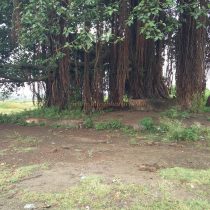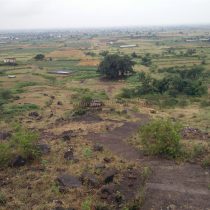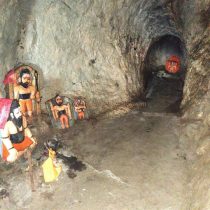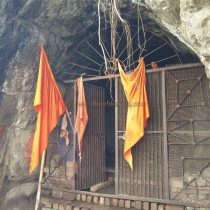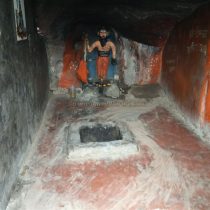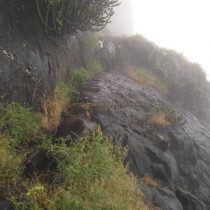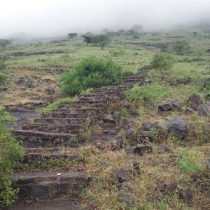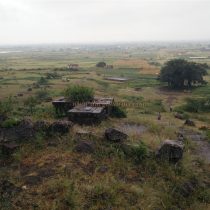GORAKSHGAD
TYPE : HILL FORT
DISTRICT : NASHIK
HEIGHT : 2762 FEET
GRADE : MEDIUM
Ankai-Tankai is an important fort in the Ajanta-Satmal mountain range. These forts were built to control and protect the Surat-Aurangabad trade route and fortify them from the point of view of warfare. As these forts are mainly used for protection and surveillance of the main fort, they do not have a distinct history. This chain of forts made it difficult for the enemy to easily attack Ankai-Tankai. Gorakshgad is not mentioned as a fort in the Gazetteer or any other historical document, but is mentioned as a fort by the locals, and looking at the caves and water cisterns on the hill, should it be called as a fort? This raises a question mark. This question remains unanswered as no remnants of the fort are found on Gorakshagad hill, but the hill is located directly in front of Ankai fort.
...
At the beginning of the mountain range, which is somewhat separated from the Ankai-Tankai fort in the Ajanta-Satmal mountain range, Gorakshagad is followed by Shambhumahadev mountain and Katra fort at the end. Gorakshgad is 85 km from Nashik via Niphad-Lasalgaon and at a distance of 10 km from Manmad. Visapur in Yeola taluka of Nashik district is a village at the foot of this fort. There is a fork on the Manmad-Yeola road from Ankai railway station to Visapur village. Shri Kshetra Gorakhnath (Visapur village) is inscribed on an arch on this fork. 1 km from this fork, an unpaved road can be seen at the foot of the fort on the right. The landmark at the end of the road is a large tree at the foot of the hill. If you have a vehicle with you, you can come here by vehicle. There are some Samadhi of Nathpanthi in the surrounding region. From here there are steps built to reach the fort. After climbing about 15-20 steps, there are three carved Samadhis on the right built out of the rock. After about 15 minutes of climbing the stairs, the end of the stairs and the footpath begins. After walking for half an hour, you will see the second set of the staircase on the right. By climbing this second staircase we go to the cave of Gorakhnath. This cave is natural and has some excavations. In this cave, there are idols of five of the Navanathas. As the next path to the cave is closed, after seeing the cave, we return to the original footpath and climb 8-10 steps carved in the rock and reach the bottom of the mountain. In this place, two caves have been constructed on the ridge below. Both these caves are of recent date and one of them has a statue of Kanifnath. Climb up the hill in front of this cave and take a detour and while turning to the right side of the hill, you can see another cave carved in the ridge. This cave is in front of Ankai fort. We take a detour around the ridge and reach the backside of the cave. There is a plain surface here but not any path to proceed further. So you need to go back to Kanifnath's cave. Now, on the left side below the ridge, you can see a cistern with green water carved in the rock inside a square-shaped cave. There is another large cave next to this cistern and water cisterns are also carved in this cave. An idol of Chouranginath has been erected on the edge of this cistern. The road from here is a bit difficult and there are no remnants in the next part of the mountain. The hill of the fort is spread from east to west and is 2730 feet above sea level. All the structures on the fort are carved in stone and there is not much plain surface anywhere on the fort. It is dangerous to go to the next part of the cave during the rainy season. Two hours is enough to climb the fort from the foothills, explore all the remains, and return.
© Suresh Nimbalkar

